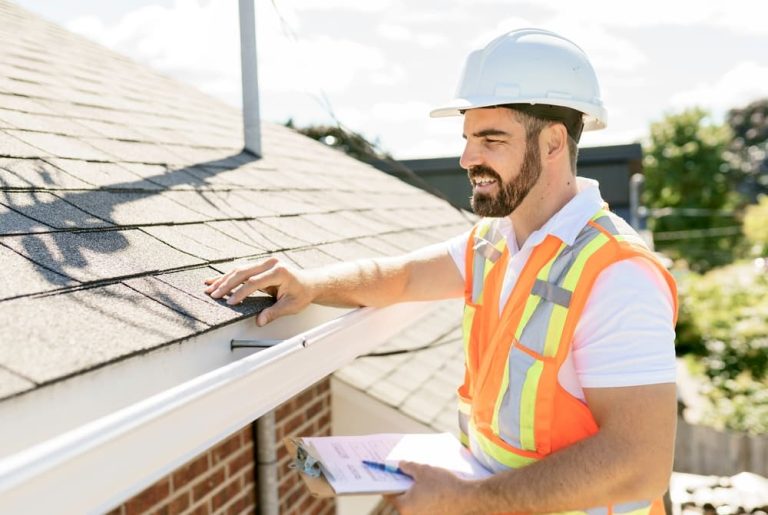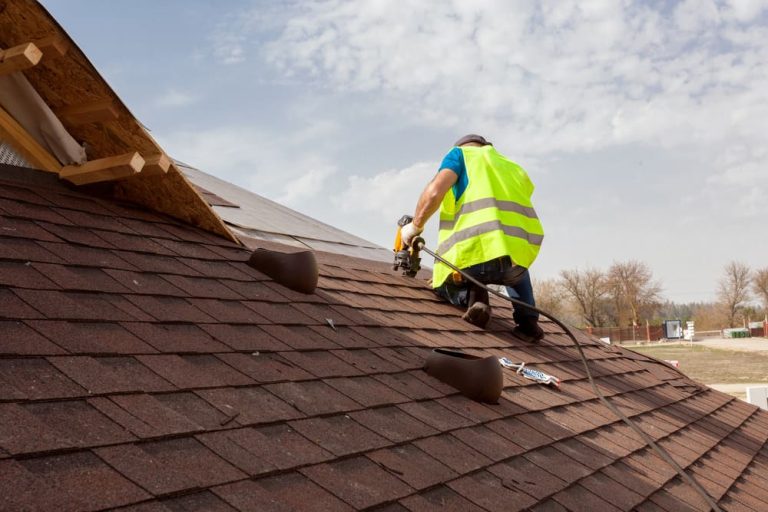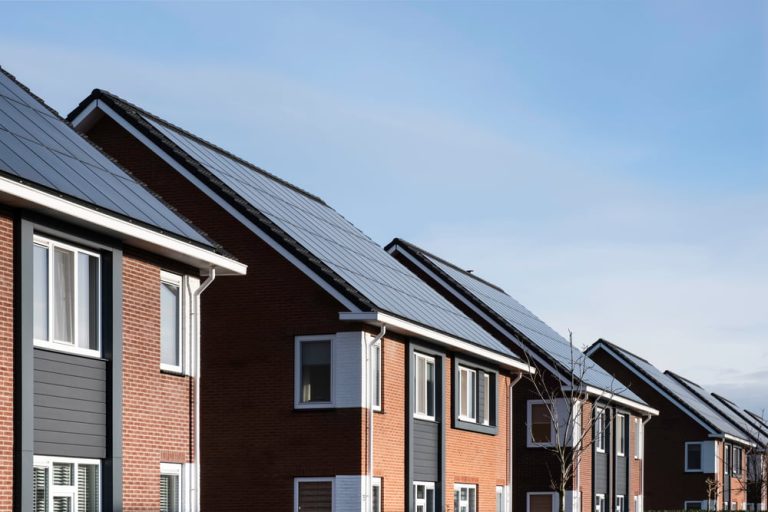Calculating roof square footage is a crucial step in numerous home improvement projects, from installing new roofing materials to calculating the amount of insulation needed. The square footage of a roof directly influences the quantity of materials that will be required and affects the overall cost of the project.
Understanding how to calculate roof square footage involves knowing the basic geometry of the roof and taking into account its unique features, such as dormers, valleys, and hips. Each roof has its own complexities and characteristics that can impact the measurement process. Roof square footage is not only about the top layer that one sees from the ground but also about ensuring a proper match between the underlayment and other materials that protect a home from the elements.
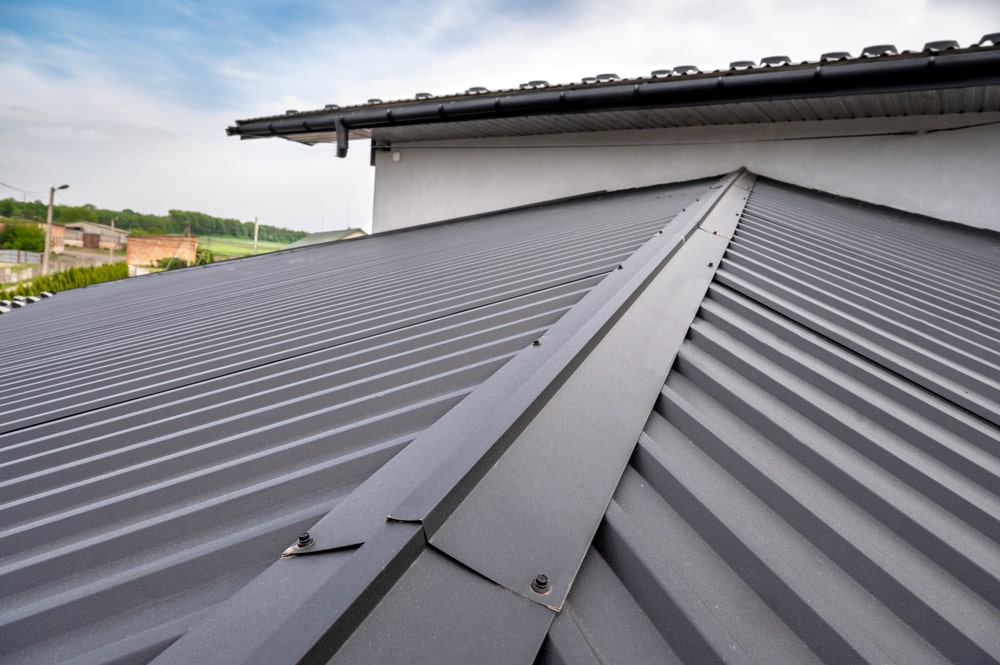
Essentials of Roof Measurement
Calculating roof square footage is a systematic process that requires accuracy. One must measure the length and width of each roof plane. The basic formula for calculating the square footage of a roof is Length x Width. Perform the following steps to ensure precise calculations:
- Preparation: Acquire a durable measuring tape, a ladder, a calculator, writing material, and safety gear.
- Safety First: Ensure that the ladder is securely positioned and always wear non-slip footwear.
For a simple gable roof, follow these instructions:
- Measure the length and width of one side of the roof.
- Multiply these numbers to calculate the area of one plane.
- Repeat the process for the opposite side.
- Add both areas together for the total square footage.
For hip roofs, mansards, or other complex designs:
- Break down the roof into geometric shapes.
- Measure each section separately.
- Calculate the area for each shape.
- Sum up all areas for the total square footage.
Note: For a more accurate measurement, consider the overhangs by extending the width and length as needed.
Advanced Calculation Techniques
When calculating roof square footage for complex structures, consider accounting for unique features and the slope of the roof. These factors can significantly affect the accuracy of your measurements.
Accounting for Complex Features
In roofing, complex features such as roof projections and dormers need special consideration. Calculating the area of each roof plane is fundamental.
- Roof Projections: Measure the base width and depth of each projection. Multiply these dimensions to find the projection’s footprint and add it to the total square footage.
- Dormers: Treat each dormer as a mini-roof. Measure the width and depth, calculate the area, and then add it to the total square footage.
By accounting for every extra element, the square footage is more precise, ensuring adequate material estimations.
Incorporating Slope and Pitch
The slope and pitch of a roof are crucial in determining the actual surface area. To incorporate slope:
- Calculate the area of each roof plane as if it were flat.
- Identify the pitch of the roof (ratio of rise over run).
- Use the Slope Factor Table to find the appropriate multiplier.
- Multiply the flat area by the slope factor to get the adjusted square footage.
This method accounts for the impact of roof slope on square footage, which ensures that measurements reflect the actual surface area rather than just the footprint.
Total Square Footage Determination
Calculating the total square footage of a roof involves careful measurement and a bit of simple math. The first step is to divide the roof into manageable geometric shapes, usually triangles and rectangles. For each individual shape, one should measure the length and the width.
Measuring and Calculating Individual Sections:
- Rectangles: Multiply the length by the width.
- Triangles: Multiply the length by the width, then divide by two.
The measurements must be taken in feet to ensure consistency and accuracy. Afterwards, write down the area of each section. One should meticulously sum the areas of all the individual sections. This will yield the total square footage of the roof.
Summing Up Areas:
- Add the area of all rectangles.
- Add the area of all triangles.
- Combine the sum of rectangles and triangles for the total.
Precision in each step ensures the final square footage is accurate. This will be critical for subsequent tasks including material estimation and cost analysis. It is essential that the person doing the calculations double-checks all measurements and mathematics to avoid any discrepancies.
Measurement Accuracy Tips
When calculating roof square footage, precision is paramount. It is important to consider various factors that can influence the accuracy of measurements. Below are recommendations to enhance measurement precision.
Accounting for Overhangs and Eaves:
- Measure each overhang and leave separately from the main body of the roof. Include these measurements in the total square footage to account for the entire area that requires material.
- Use a tape measure to extend from the edge of the roof to the point where it meets the building to get the width of overhangs.
Handling Irregular Roof Shapes:
- Divide irregular roofs into geometric shapes such as rectangles and triangles.
- Calculate the area of each shape separately before summing them up for the total square footage.
Dealing with Inaccessibility:
- Utilize tools like laser distance measurers when physical measurement is impractical.
- Consider hiring a professional with drone technology to assess difficult-to-reach areas.
Consistently apply these tips to ensure accuracy in roof square footage calculations, which will lead to more precise material estimations and cost projections.
Practical Implications of Accurate Measurements
Accurate measurements of roof square footage have significant implications for both homeowners and contractors. The precision of the measurements directly influences the estimation of materials and costs, ensuring that resources are utilized efficiently and economically.
Estimation of Materials: Accurate square footage calculations inform the quantity of materials needed. An underestimation leads to insufficient materials, potentially halting a project. Conversely, overestimation results in excess, which unnecessarily elevates costs and may result in material waste.
- Tiles or Shingles: The number needed can be precisely determined.
- Underlayment: Ensures the appropriate amount is purchased.
- Flashing: Accurate measurements dictate the appropriate length.
Cost Calculations: Contractors base their quotes on the square footage of the roof. Clients rely on these figures for budgeting and financial planning.
- Labor: An accurate estimate of the work area allows for a more precise labor cost projection.
- Contingencies: Proper measurements can help in setting aside a more accurate contingency budget.
Project Planning: The accuracy of roof measurements impacts the timeline and efficiency of a project.
The data derived from meticulous measurements also holds value for long-term maintenance and future repairs, providing a reference point for any subsequent work that might be necessary.
Technological Aids for Roof Measurement
The modern age of technology offers multiple solutions for measuring roof square footage with increased accuracy and efficiency. Property owners and contractors have the advantage of using sophisticated online calculators and software to obtain precise roof measurements.
Online Calculators: They simplify the measuring process by requiring basic dimensions which can often be sourced from building plans or rough estimates. Upon entering these figures into the calculator, users promptly receive an estimation of the roof’s square footage.
Software Applications: Dedicated applications utilize satellite imagery and aerial photos to analyze roof structure. They can calculate the area by factoring in pitch, ridges, and valleys, leading to comprehensive and detailed measurements.
Contractors can also integrate these technological tools with estimation software to streamline the quoting and material ordering processes. The precision and ease provided by these technological aids have revolutionized roofing measurements, ensuring that professionals and DIY enthusiasts can approach roofing projects with confidence and clarity.
Choosing Roofing Contractors
When embarking on a project to calculate and replace roof square footage, selecting a reputable roofing contractor is crucial. The following are key things to consider when replacing a roof.
Experience and Expertise:
Employ a contractor with a solid track record. They should have years of experience and a portfolio of completed projects. The expertise of the contractor directly affects the quality of the roofing job.
Reviews and Testimonials:
Look for customer reviews and ask for testimonials. A contractor with positive feedback is preferable. This reflects their reputation and the satisfaction of past clients.
Written Estimates:
They should provide a detailed written estimate. It must itemize labor, materials, and other costs. Avoid roofing contractors who give vague or incomplete estimates.
Warranties Offered:
A reliable contractor offers warranties for materials and workmanship. This underscores their confidence in the quality of their work and materials.
Conclusion
Accurate measurement of roof square footage is essential for any successful roofing project. Without precise calculations, individuals run the risk of under or overestimating the amount of materials required, potentially leading to unforeseen expenses or project delays.
- Precision: Ensures proper budgeting and material acquisition.
- Efficiency: Streamlines the workflow by preventing rework and waste.
- Practicality: Facilitates clear communication among contractors, suppliers, and clients.
- Compliance: Adheres to building codes and regulations, avoiding legal complications.
One should remember that measurements form the foundation upon which roofing projects are built. Contractors rely on these figures to provide accurate quotes, and homeowners depend on them to budget accordingly. Furthermore, suppliers use these details to deliver the correct quantity of materials, ensuring that projects remain on schedule.








